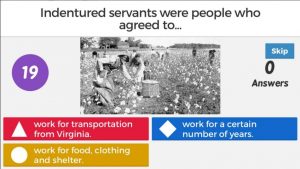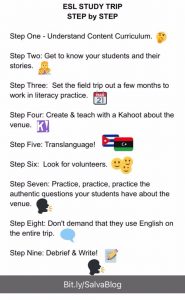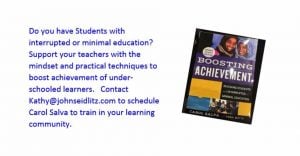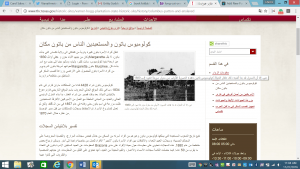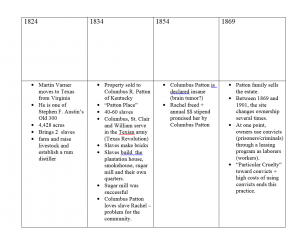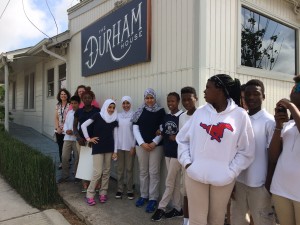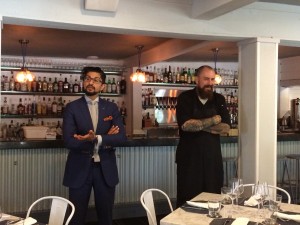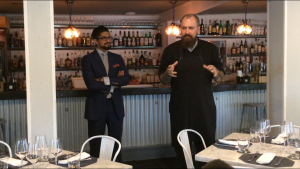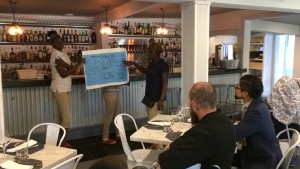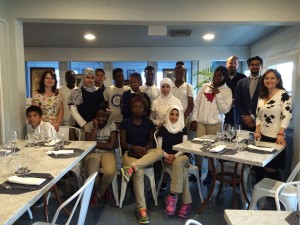As an ESL teacher, we know that our students must produce the target language to acquire the target language. I love Stephen Krashen’s Compelling Input Hypothesis which suggests students need reading material that is not just interesting, it needs to be compelling. I have seen this happen in my classroom and I am also noticing that my newcomers will produce more English when the desire for output is compelling.
We are near the end of the 2nd semester now. Quite a few newcomers have developed intermediate or advanced speaking skills and listening comprehension is advanced for most of my class. They are more comfortable taking risks and so it is a perfect time to do a study trip. These students will need to take a US History state exam to receive a diploma. So I am looking for compelling units of study that also align to their state standards. My hope is to generate compelling desire for output with US History so that the students have an authentic desire to produce the language.
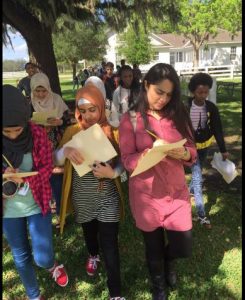
This is where our trip to Varner-Hogg Plantation comes in. This was our only study trip this year but a lot of language acquisition and background knowledge were acquired before we arrived at the historic site. This was not difficult at all. We watched the video on the Texas Historical Commission’s site and I allowed the students to translate pages into their native language for discussion. I also made a Kahoot with facts about the history of the plantation from the site. The history of our first colonists in Mexican Texas, the revolution, slavery & the civil war are concepts that are generally covered in middle school. So my newcomers would not have that background. I appreciate how much we could cover in a short period of time that lead right up to what they should be studying in US History now. We are already discussing the indentured servants, the civil rights movement, the cattle industry and more as they relate to this historic site in our area.
The students are finding so many parallels in history to what they have experienced or what has happened in their countries. All of this, plus a chance to ask their questions, created very high engagement and a compelling desire for output.
This 3 minute video will show you some of our day. The students were on their phones, sure. They were snapping pictures and taking notes and many sent me pictures so I made this video with our combined collection. It is worth noting that one of the students asking a question in the video arrived 2 days ago. He relied on translations of what he was hearing but I’m excited about all the grade level learning he was doing. His language will come as it is for all of these students and even our brand new student was building background for state assessed history concepts.
I would encourage ESL teachers to review standards that are being taught in content classes so that you can use what makes sense in your ESL classroom. If you are unable to plan with content teachers, they might provide you with their scope and sequence, their standards to be covered or you may be able to find this information on your own (ie: Common Core standards, TEKS, etc.).
Our main priority is to teach English speaking, reading, writing and listening skills. But if you can make science, math or history compelling to your students, it will benefit them greatly to learn English within a unit that incorporates those standards.
Step by Step for an Awesome ESL Field Trip
Step One – Understand Content Curriculum. You can ask your content teachers, curriculum folks or look online.
Step Two: Get to know your students and their stories. You will want to pick a venue that has some relevance for your students. Historical sites are great for culturally responsive teaching.
Step Three: Set the field trip out a few months to work in literacy practice. Shared reading & read alouds with content area text books, curriculum materials and web information.
Step Four: Create & teach with a Kahoot about the venue. You can review with this same Kahoot a few times. 10 facts about the venue introduced through a Kahoot is a great way to build anticipation and background.
Step Five: Translanguage! Use their entire repertoire of language to learn about the venue. Any website in Google Chrome can be translated with a right-click.
Step Six: Look for volunteers. Use this video! It’s hokey but effective to send out to the community: https://youtu.be/HP6njDnEwHE
Step Seven: Practice, practice, practice the authentic questions your students have about the venue. Offer them the correct English and model pronunciation. Lots of role playing and practicing on sentence strips or any way to help them get comfortable with what they want to ask on the big day.
Step Eight: Don’t demand that they use English on the entire trip. Ask that they use their English question but allow native language exploration. Students should have a great deal of academic and basic language about the venue at this point. The day will reinforce all of the learning. (The day is just icing on the cake. Much of the learning has already happened.)
Step Nine: Debrief and write! There will be lots of shared experience now to be able to write together and on their own.
Be open to any opportunities to help them make connections and keep your expectations for them very high!
Thanks for reading about our adventures. Can’t believe it’s almost year end! Let’s finish strong!
Carol
PS: Need more support? Contact Kathy Ballenger, Director of Operations at Seidlitz Education.
